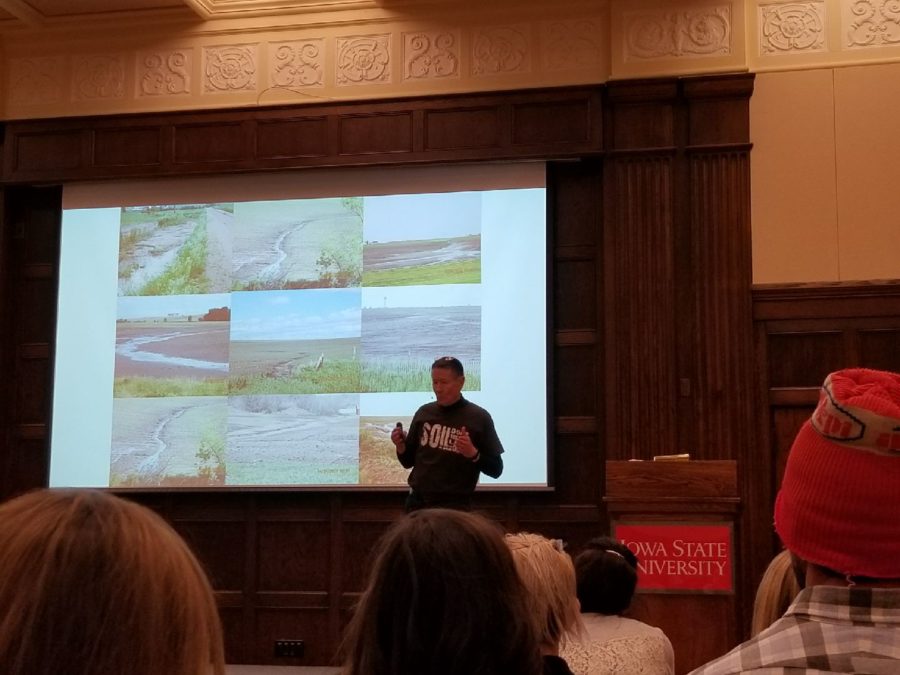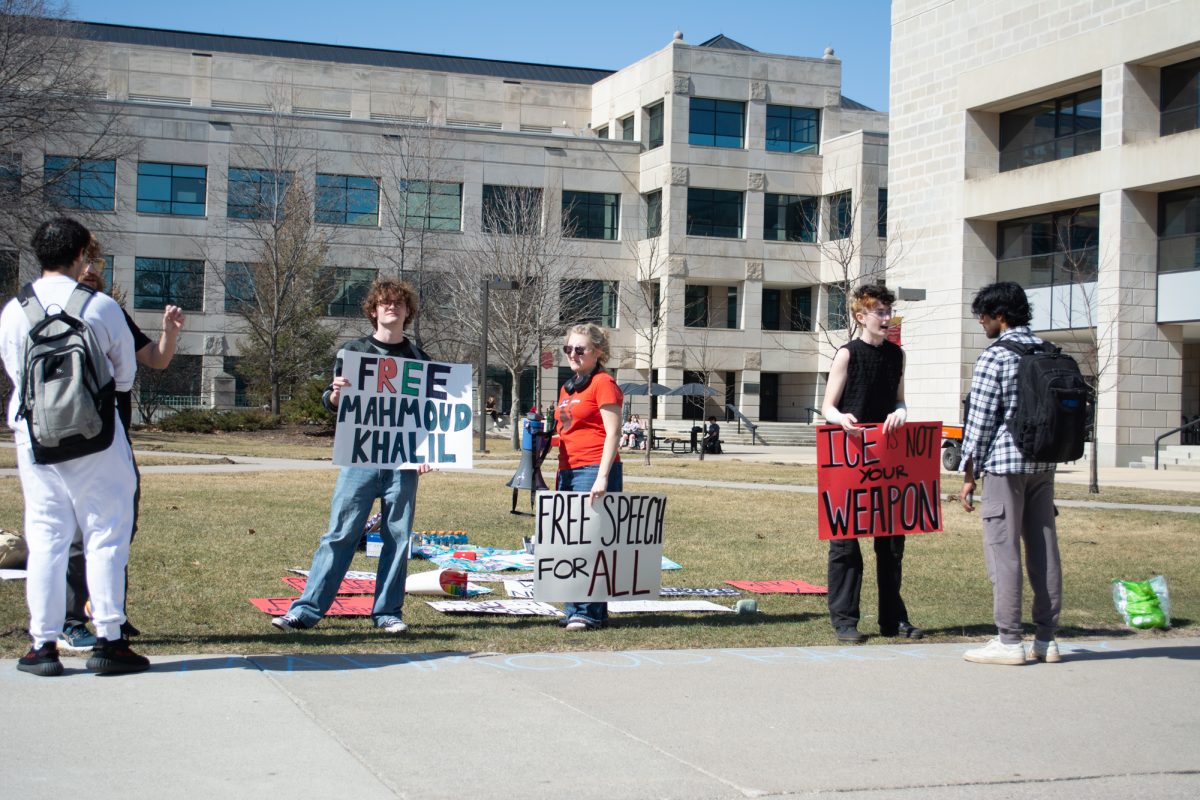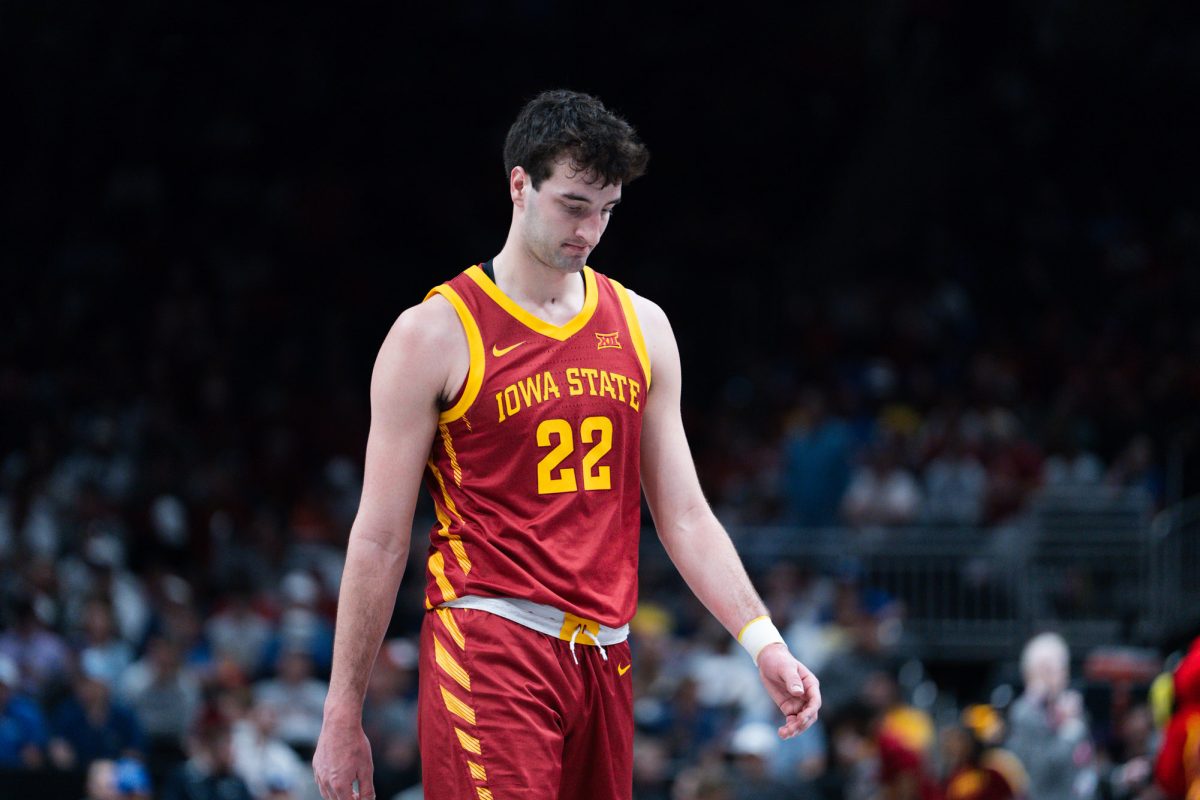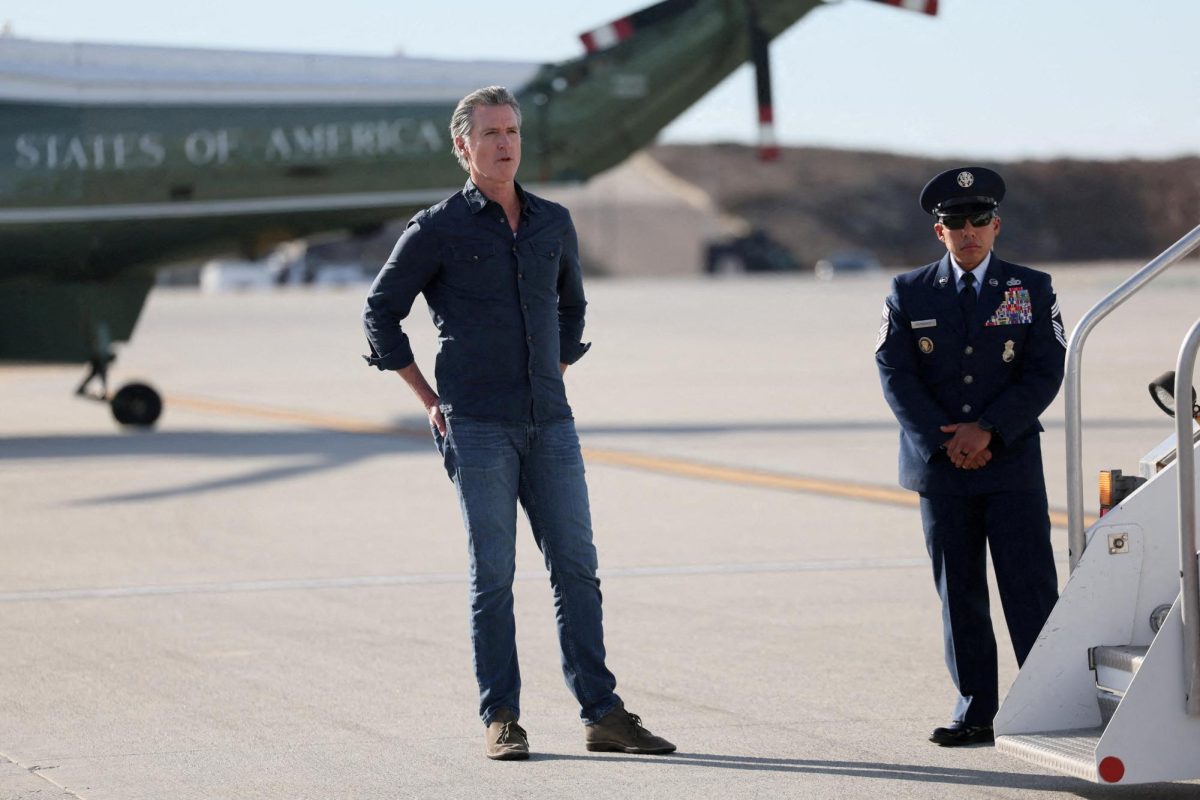TEDxIowa State Universiy discusses a diverse range of topics
April 3, 2018
TEDx Iowa State University presented seven speeches and two videos covering topics from how poetry changes lives, to how to become successful in technology.
1. Crystal Stone
Poetry is seen almost every day for many people and the effect that it has can be profound.
“When did poetry lose its value for you?” Crystal Stone said.
She recalls the multiple instances that poetry significantly impacted her. In her first story, she talks about the custody battle that happened between her parents until she was in seventh grade. She was first asked to take the stand during the trial when she was in fourth grade.
“They asked me, ‘Do you know what it means to tell the truth?’” Stone said.
However, because she was so young, people questioned whether she understood what alcohol was and what being drunk meant. That all changed when she was in seventh grade and she wrote a poem to the judge about her mom’s alcoholism.
“Get in the car! Mom said,” Stone said. “…at six years old I was praying to make it back.”
The judge was receptive to what she said, and she and her brother were not required to visit her mom again.
“For the first time I felt not only heard but understood,” Stone said.
Stone went on to talk about how poetry can help spark social change and change how people view the world.
“If we would listen, if we would listen by reading, what more could we understand about each other, what more could we understand about ourselves?” Stone said.
2. Bilawal Khoso
Bilawal Khoso first came to America in August of 2015 at 26 years old. On his way here, he sat next to an Indian student on the airplane.
India and Pakistan have had a strained relationship for a long time and this was the first time that Khoso had encountered someone from India. He immediately began to judge the student without talking to him. However, he changed his perception and ended up making a new friend.
“The minute I decided to disregard that box, that was when I discovered that we were more similar than different,” Khoso said.
Khoso came to America for graphic design and has now developed a project called Get.
Get is a multi-media installation with massive pictures of different people’s faces. There is a QR code next to each face that can be scanned and leads to a clip of the person telling their story.
“The minute you listen to their stories, it destroys that box,” Khoso said.
His next goal is to make Get mobile.
“If people can’t come to the exhibition, we can take the exhibition to the people,” Khoso said.
Instead of judging a book by its cover, “I learned the practice of judging a book by its story,” Khoso said.
3. Ayah Bedir
Ayah Bedir developed Little Bits, a product that won 2018 toy of the year. Her inspiration came from Lego and how they made the everyday concrete block available to everyone to build their own creations.
Little Bits did the same thing with circuits and put the power of engineers in the hands of designers. The circuits can be connected by magnets and can be used by young children and adults.
“The interactive world is ours,” Bedir said.
4. Jedidiah Yuehz
Technology is now something that many people have access to and no longer requires skills in coding to create the next big thing.
Jedidiah Yuehz has been the CEO of two different software companies and has little experience in coding, but he dreamed of a career in technology.
He talked about the concept of Thin Tech.
“You don’t have to code software if it has been already coded for you,” Yuehz said.
There are many accessible codes through the cloud and open sources. All that is needed is a thin layer of innovation.
“The amount of innovation that it takes to move the world has become thinner,” Yuehz said. “That’s why the idea for a product is the only thing that really matters.”
The enormity of Facebook creates the illusion of unattainability; however, it only took Mark Zuckerberg a week to develop it.
Yuehz encouraged people to look for sources of frustration and pair it with an idea for a product.
“That’s how easily it can get started,” Yuehz said.
5. Vanessa McNeal
Stories are connected with a thread that weaves in between each one.
“A story is a relationship between who you are, who you become, and the outside world,” Vanessa McNeal said.
McNeal talks about how she was molested as a child by two members of her family for much of her childhood.
“What’s so damaging about sexual abuse is that it disrupts the view of who you are,” McNeal said.
She felt alone because she never heard someone else talk about sexual abuse happening to them. That changed when she went to college and took a class about sexuality. Her professor openly talked about how she had been sexually abused and helped McNeal in telling her story.
“I knew who I could be because of her,” McNeal said. “I could be a victor instead of a victim.”
Even though talking about sexual abuse does not change what happened, “knowing that you’re not alone helps tame the trauma,” McNeal said.
After creating a documentary about herself and her story, multiple people came to her with stories of their own. This inspired her to create We Are Survivors a documentary about women who have suffered through sexual abuse. She also helped created The Voiceless a documentary about men that have suffered from sexual abuse.
“We live in a culture that doesn’t acknowledge that men can be victims,” McNeal said.
“Stories have the power to break the chains of oppression…who will you impact with yours?” McNeal said.
6. Alyna Nazieha
Alyna Nazieha started her talk by asking people to close their eyes and think about everything that they love.
“Within those few seconds, how long did it take for you to think of yourself?” Nazieha said.
Back in Malaysia Nazieha was terrified to talk in front of people, even if it was only her classmates. Her palms would get sweaty and she would not know what to do with her hands. Three years later she is up on a stage giving a talk about how to be confident.
“I learned to turn my fears into my strengths,” Nazieha said.
When deciding whether to do something Nazieha has a question that she asks.
“Will it matter to you in the next five or ten years?” Nazieha said. “If your answer is no, you should do it. If your answer is yes, you should still do it.”
Practice and repetition are the main things that help build confidence
“It is okay to take it at your pace,” Nazieha said. “Celebrate small victories to stay motivated.”
7. Chris Nowinski
Many times, when Chris Nowinski first meets someone often part way through a conversation he will ask them, “Can I have your brain?”
Nowinski is the founder of the Concussion Legacy Foundation which looks at different professional athletes’ brains that have been donated to science for Chronic Traumatic Encephalopathy (CTE).
CTE is a disease found in people who have experienced a lot of brain trauma and can only be detected after death. Out of the 111 NFL brains that were studied, 110 of them were positive for CTE.
Nowinski has also created the Brain Donation Registry which means that instead of him having to call grieving families to ask for brains, they now call him.
“There is no treatment right now,” Nowinski said. “What we can do is prevent it by not hitting people in the head.”
8. Justin Roberson
When Justin Roberson went one of his professors about problems he was having in class, she laughed at him.
“She hadn’t heard me,” Roberson said.
For many black students, they feel like they must act white or fail. Graduate students are 50% more likely to be harassed or threatened, both physically and verbally.
“I know that two brains are better than one, but when they are in one dark body, there are problems,” Roberson said.
He talked about some problems he has had while in college.
“Imagine the horror of being denied access to a building that I worked in,” Roberson said. “And having to prove that I was a student, multiple times.”
Before being able to listen to someone, a person must understand where the other is coming from.
“You have to listen to understand and not to respond,” Roberson said.
Code Break is a term used to help with the dialogue between diverse cultures and ethnicities. There are three steps to Code Break.
Being able to share meaning with the storyteller and understand where they are coming from helps further dialogue.
Affirming the storyteller that they are the expert of their own story and not interrupting them helps expand understanding.
Finally, be comfortable with non-closure and differences between people and their cultures.
9. Rick Cruse
The S word helps everyone live every single day. Soil is being lost from Iowa ten times faster than it is being made.
“Without soil, we have nothing,” Rick Cruse said. “The best habitats, the best trees, the best hunting, happened with the best soil.”
Issues have begun to emerge with the changes in Earth. The global population has continued to grow and needs more food than ever to sustain itself. America has lost 41 million acres of soil. For a comparison, Iowa has 36 million acres.
Climate change has also affected the soil. Future growing conditions are going to worsen, and the weather is going to become more extreme, resulting in fewer crops making it to harvest season.
“Technology is a tool, not a solution,” Cruse said.
Cruse started the Daily Erosion Project to help make people aware of how important soils are to life.
“The nation that destroys its soils will destroy itself,” Cruse said.







